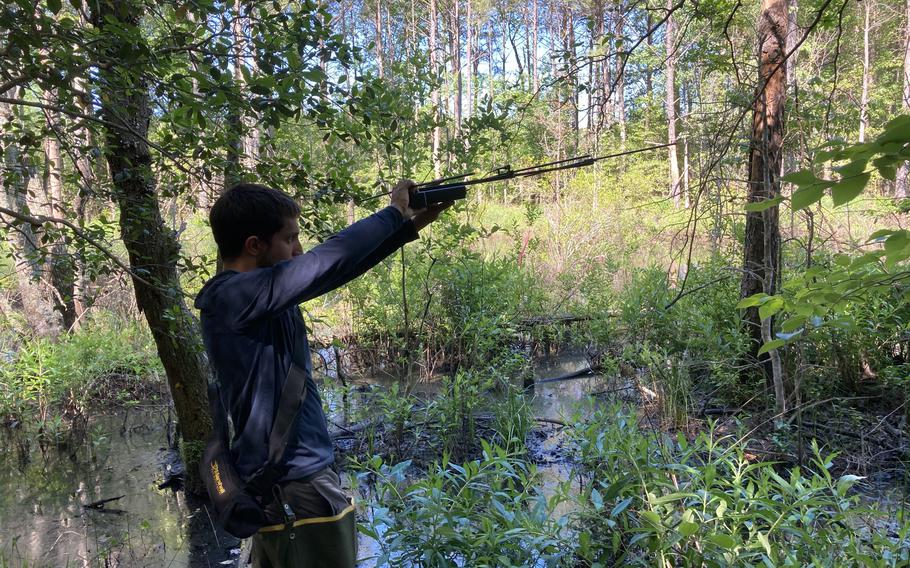
Wildlife biologist John Mayersky tracks down Spotted Turtle 962 for an update of Naval Weapons Station Yorktown's natural resources management plan. (Dave Ress, Daily Press/TNS)
(Tribune News Service) The Department of Defense invested $128 million last year through its participation in the Chesapeake Bay Program’s efforts to restore the bay.
The department operates 138 installations and annexes in the bay watershed, covering more than 400,000 acres. In its annual report on the bay, the DOD said that it planted 189 acres with 54,956 trees and restored 9,251 feet of shoreline and streams that feed the bay.
Both are aimed at slowing or blocking the flow of pollutants such as nitrogen or phosphorus that create low-oxygen dead zones.
Some 232 projects aimed at diverting polluted stormwater run off from 358 acres of parking lots and other impervious surfaces from flowing directly into the bay and its tributaries.
“Since 1984, DOD has been a committed partner in Chesapeake Bay watershed restoration,” said Rear Adm. Charles W. Rock, commander of the Navy’s Mid-Atlantic Region.
Rock, the Defense Department’s lead agent for the Chesapeake Bay Program, a combined effort of federal and state governments as well as nonprofit groups, said DoD personnel kept their focus on Bay restoration despite the challenges posed by the pandemic.
The biggest chunk of DOD spending, $105 million, went for clean water programs. In addition to stream and shoreline restoration work, last year’s effort saw the start of construction of a new wastewater treatment plant at Norfolk Naval Shipyard.
DOD’s $10 million “abundant life” program spending boosted its protected wetland acreage to 43,833 and restored underwater grasses acreage to 8,636.
These efforts included Joint Base Langley-Eustis’s treatment of 80 acres of wetlands along the Back River last year in its continuing effort to keep invasive Pragmites reeds from choking out native wetlands plants along the Back River.
This push has two big effects. It provides habitat for 14 fish species, and it also reduces the risk of wildfires that could interfere with flight operations.
DoD’s $12 million investment in land conservation efforts added some 3,935 acres through a cost-sharing program with state and local governments as well as private conservation groups. Over the years, this effort has protected some 42,528 acres from development that could allow more pollutants to reach the Bay and encroach on military bases.
These investments included $1 million awarded for Naval Weapons Station Yorktown and its partners’ effort to restore some 900 feet of living shoreline and 3.5 acres of near-shore salt marsh, oyster reef and shallow water habitat.
Besides sustaining wildlife, including crabs and oysters, this effort will help the base cope with rising sea levels, the DOD report said.
©2021 Daily Press.
Visit dailypress.com.
Distributed by Tribune Content Agency, LLC.